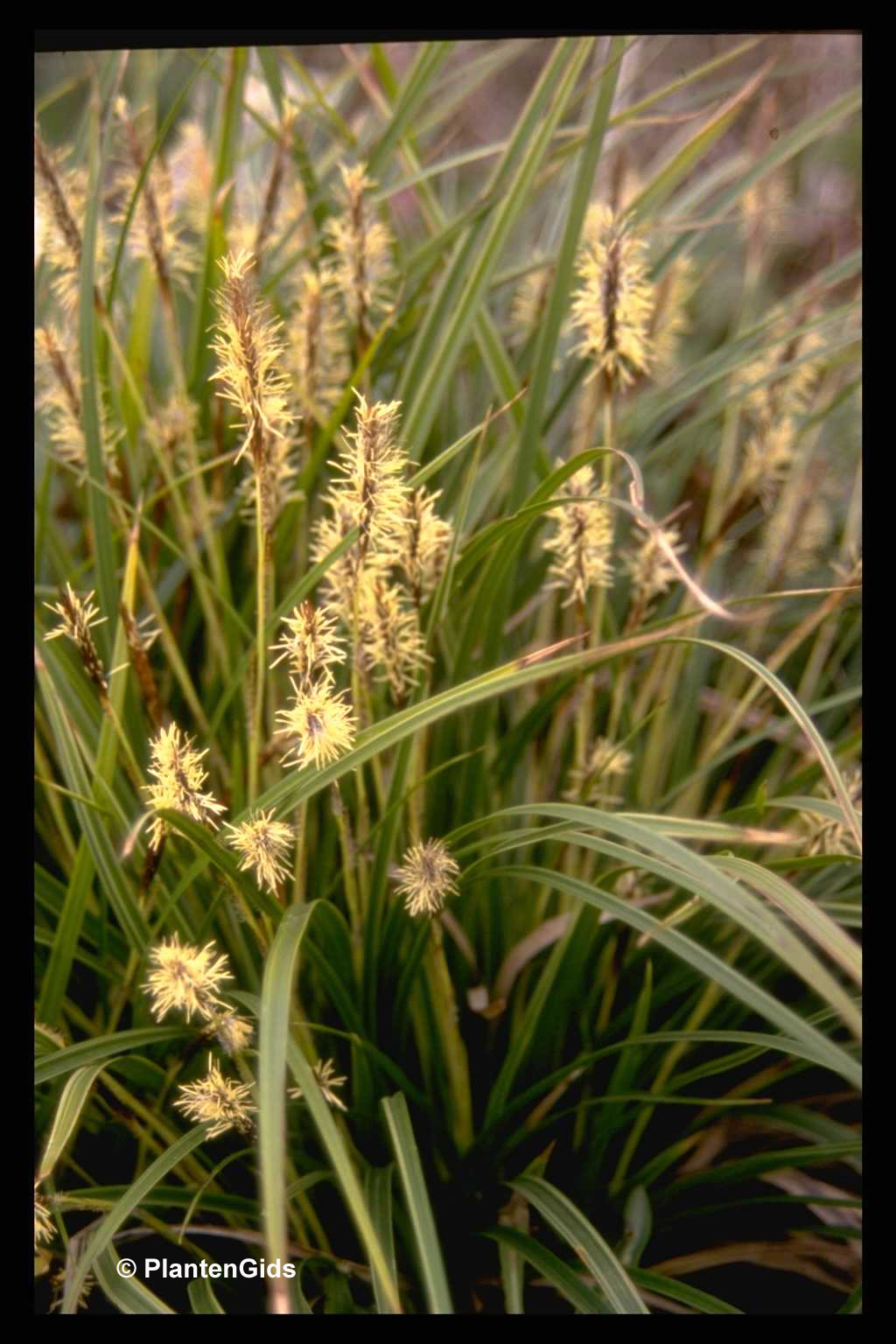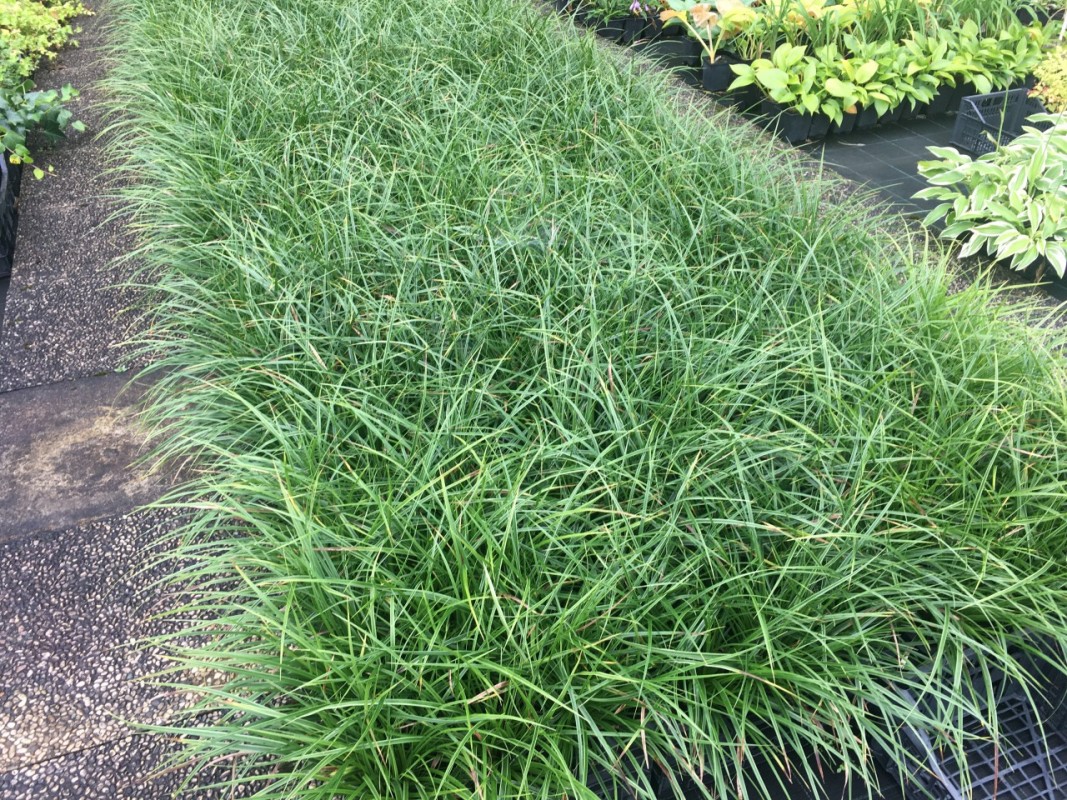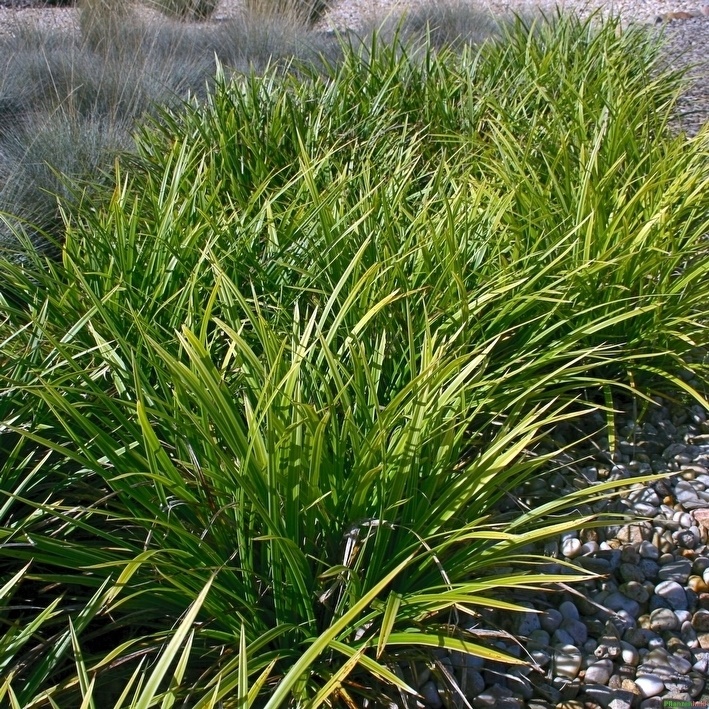
Carex morrowii 'Variegata'
Positive. On Mar 18, 2006, HelenEngle from University Place, WA (Zone 8b) wrote: Carex morrowii is a brightener of dark places, loves shade, appears to be drought tolerant, has no diseases or problems. Never needs any care -- no shearing, etc. Nestles nicely against walls, stones in rock gardens. It looks orderly and well behaved all year.

Stauden Stade Versand Shop Carex morrowii 'Variegata' (WeißrandJapanSegge) hier bestellen
The Plant Guide Browse the Full Plant Guide 'Ice Dance' variegated sedge Carex morrowii 'Ice Dance' KARE-eks mor-OH-ee-eye 'Ice Dance' is a dense, spreading sedge grown for its foliage. This sedge looks good year-round, even in winter.The early-spring flowers are insignificant, but the white-edged leaves complement most other plants.

Carex morrowii 'Variegata'
Carex morrowii ( Variegata sedge ) 'Variegata', has droopy, graceful white and green striped grass-like foliage. Mounds attractively. Excellent when used as ground cover or en masse. This cultivar bears streaks of silvery green on it's glossy green leaves and flower spikes in green and tan.

Carex morrowii 'Variegata'
Carex morrowii, commonly known as Japanese sedge or Morrow's sedge, is a sedge that typically grows in a dense, grass-like clump to 1-2' tall. It is native to low alpine areas in Japan. This sedge is typically grown for its attractive shape and foliage. Plants feature stiff, flat, narrow, long-pointed, solid green leaves (1/2" wide to 12" long).

Carex morrowii 'Variegata' šaš GRASSES Catalog Trajnice Strgar
Variety: Variegata Type: Annual/Perennial Family: CYPERACEAE Origins: Japan Light: Full Sun to Part Shade Wind: Wind Tolerant Growth: Medium Frost: Hardy Evergreen: Yes Native: No Height: 0.3 m Width: 0.5 m Position Border Rockery Shrubbery RETAIL Availability Some Searching Required Flower Colour Green Flowering Time (Southern Hemisphere)

Carex morrowii 'Variegata' (Geelbonte Zegge) De Tuinen van Appeltern
Carex morrowii 'Variegata': An evergreen perennial grass (or grassy in appearance) or groundcover with variegated, gold, white and green foliage and chocolate flowers in summer. It contributes grassy texture to the garden. To grow well, it prefers sun - shade and even moisture - regular water. Adaptable to various soil conditions.

Carex morrowii 'Variegata' (Geelbonte zegge) p9 De Tuinen van Appeltern
Carex Morrowii Variegata has narrow, arching leaves that are green and white-striped. The leaves grow up to 12 inches tall and spread up to 24 inches wide. The flowers are insignificant and appear in late spring to early summer. This plant is a slow grower and maintains its compact shape.

Carex morrowii 'Aureo Variegata' Gold Variegated Japanese … Flickr
Japanese sedge—also known as Morrow's sedge or evergold carex—is a semi-deciduous rhizomatous evergreen native to Central and Southern Japan. It forms a densely tufted tussock of slender foliage that shimmers in the breeze, with flat, dark green leaves that are 12 inches long and 1/4- to 1/2-inch wide.

CAREX morrowii Variegata
Carex morrowii ( Variegated Japanese Sedge Grass ) The cultivar, 'Old Gold' are mounded, clumping plants with green and gold striped grass-like foliage. Archlike foliage. C. morrowii makes an excellent ground cover. Plant is drought tolerant once established. Spring fertilization is recommended. Can be mowed in spring.

Carex morrowii Variegata Graminée persistante à feuillage nervuré de blanc
Carex morrowii Common Name (s): Evergold Carex Japanese Sedge Kan suge Marrow's Sedge Sedges Phonetic Spelling KAY-reks mor-ROW-ee-eye Description Dense, mounding grass-like plant - 12-18" tall. Drought tolerant but grows well in wet soils. Grows well as a container plant. Quick ID Hints: Flat, thick leaves, 1/4-1/2" wide

Zegge 'Variegata' (Carex morrowii 'Variegata') Siergrassen, Siergras, Bloemplanten
Brightening up the shade garden, Carex morrowii 'Variegata' is a semi-evergreen Japanese Sedge forming a low, slow-spreading tufted mound of narrow, arching, glossy, deep green leaves adorned with fine creamy-white edges. In mid to late spring it bears inconspicuous brown flower spikes on long stems.

Carex morrowii variegata Lot de 3 godets de 7 cm Gamm Vert
Buy this plant Plant nurseries 11 suppliers Size Ultimate height 0.1-0.5 metres Time to ultimate height 2-5 years Ultimate spread 0.5-1 metres Growing conditions Loam Chalk Sand Clay Moisture Moist but well-drained, Well-drained pH Acid, Alkaline, Neutral Colour & scent Position Full shade

Carex morrowii 'Aureavariegata' Golden Japanese Sedge for sale
According to my actual experience, Carex morrowii is not just a plant; it's a masterpiece of nature. Its ornamental allure is heightened by a myriad of cultivars, each boasting its unique charm, mostly in variegated hues. What struck me most is its adaptability - thriving in heavy shade, resisting deer, and standing strong against erosion.

Carex morrowii, Carex morrowii kopen, Carex morrowii bestellen Het Groene Paradijs Modern
Carex morrowii, commonly known as Japanese sedge or Morrow's sedge, is a sedge that typically grows in a dense, grass-like clump to 1-2' tall. It is native to low alpine areas in Japan. This sedge is typically grown for its attractive shape and foliage. Plants feature stiff, flat, narrow, long-pointed, solid green leaves (1/2" wide to 12" long).

Kostenloser Versand Carex morrowii Variegata kaufen Weißgestreifte JapanSegge bestellen
A lush mound of slender, bright green leaves with strong creamy white margins that will brighten woodland gardens, water gardens and shady borders. Spreads gently by underground stems (rhizomes) to create a dense mat of foliage. An easy growing, non-invasive groundcover. Semi-evergreen. Light. Filtered sun, Partial shade, Partial sun.

Carex ( Segge ) morrowii 'Variegata' online kaufen
Carex morrowii, commonly known as the Japanese sedge, Morrow's sedge, Kan suge, or Variegated sedge, is a species of flowering grasses in the Cyperaceae family. This superb plant is native to the lower alpine areas of Central to Southern Japan. It grows mostly in wetland habitats, such as marshes, bogs, ponds, calcareous fens, or stream banks.
